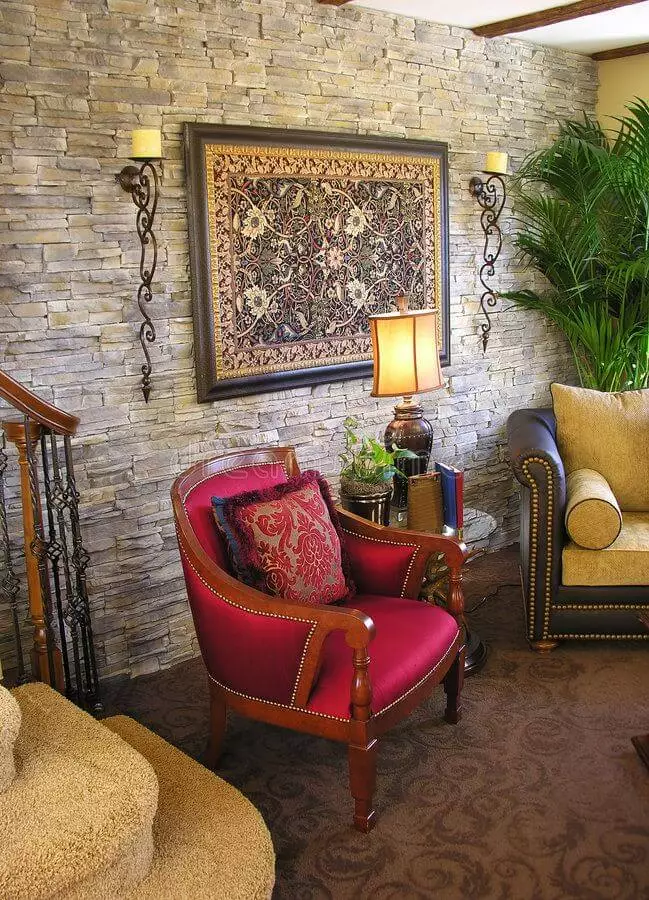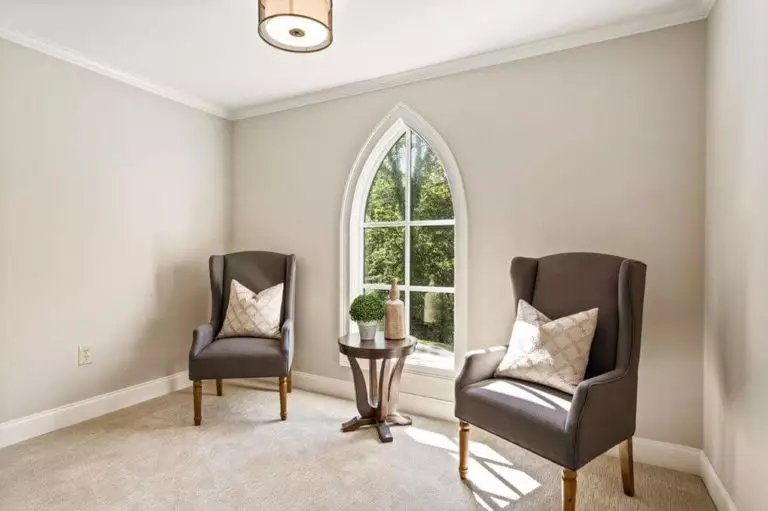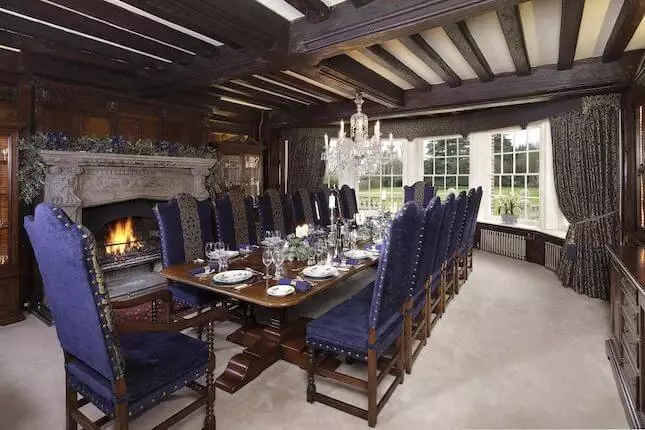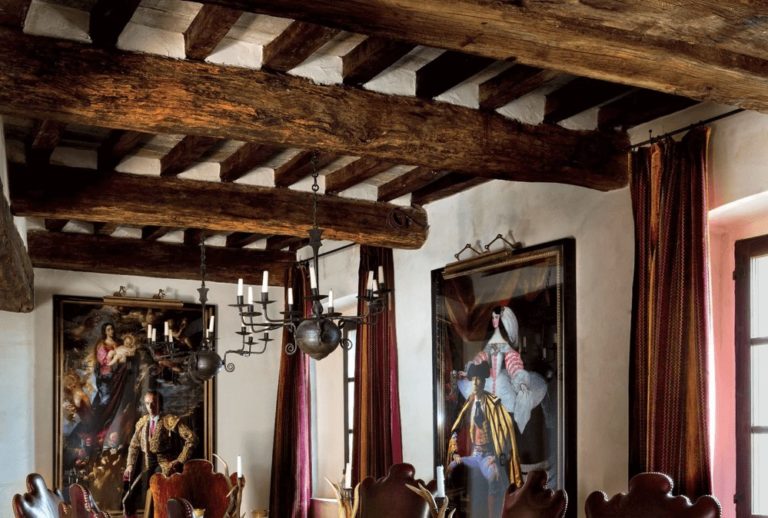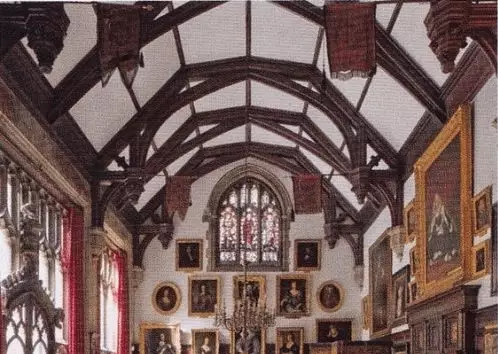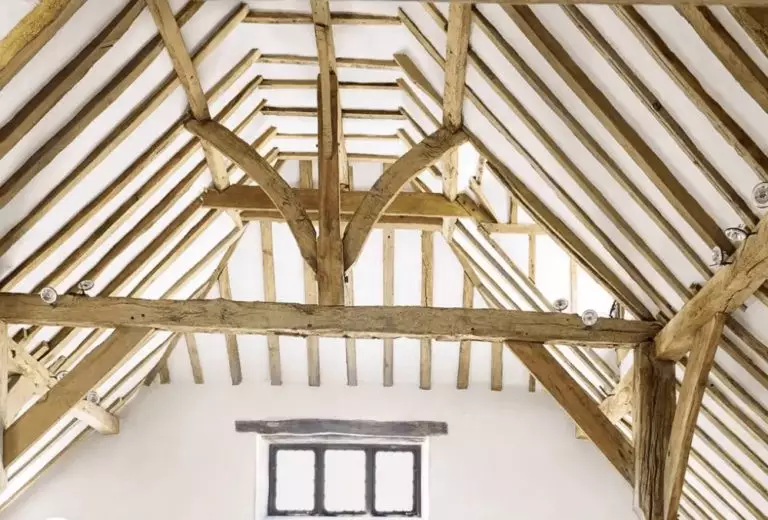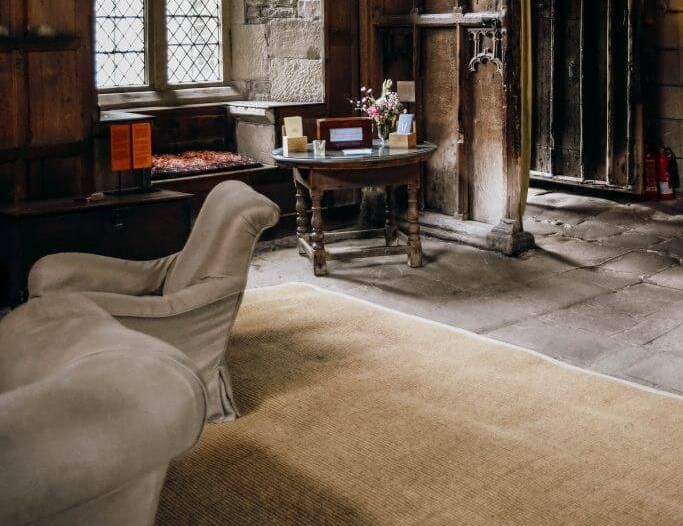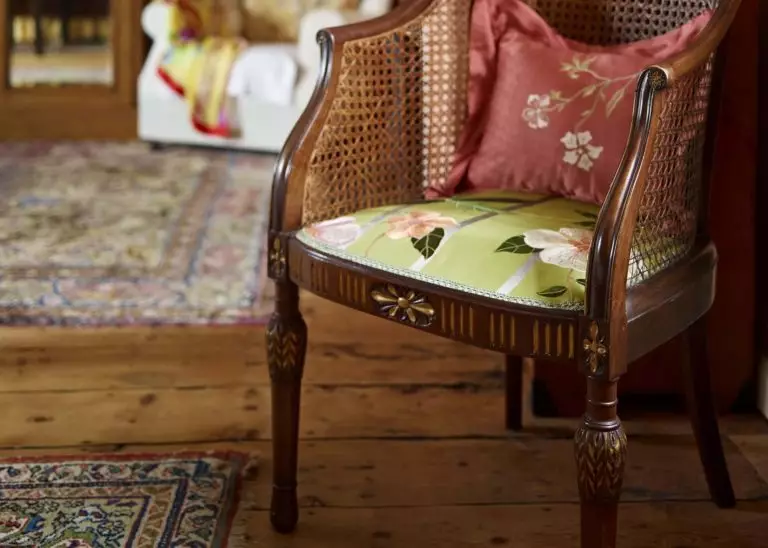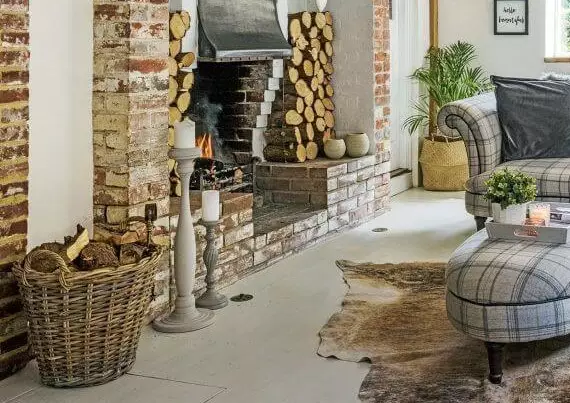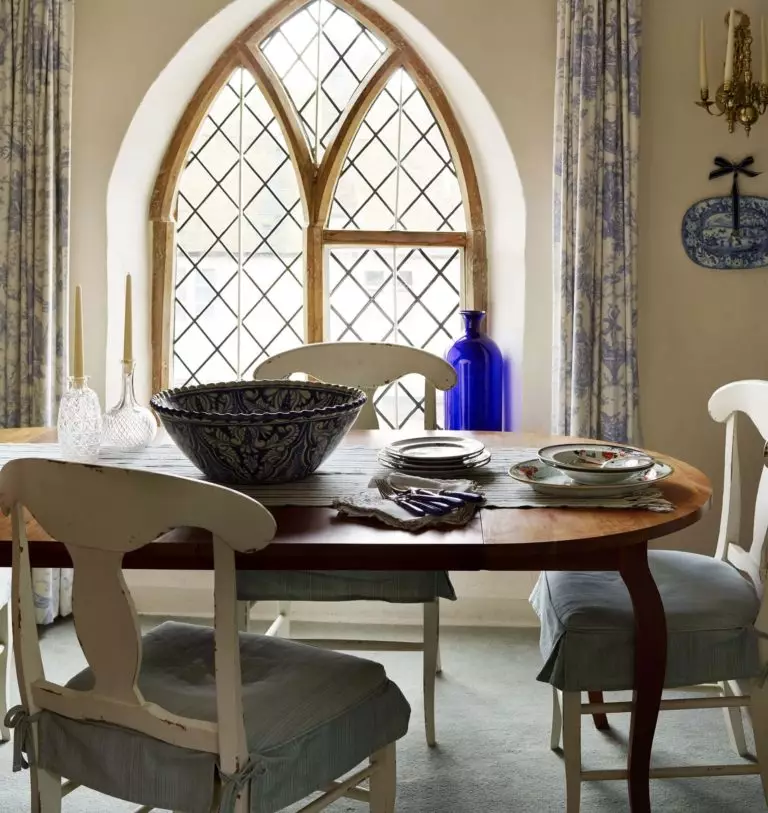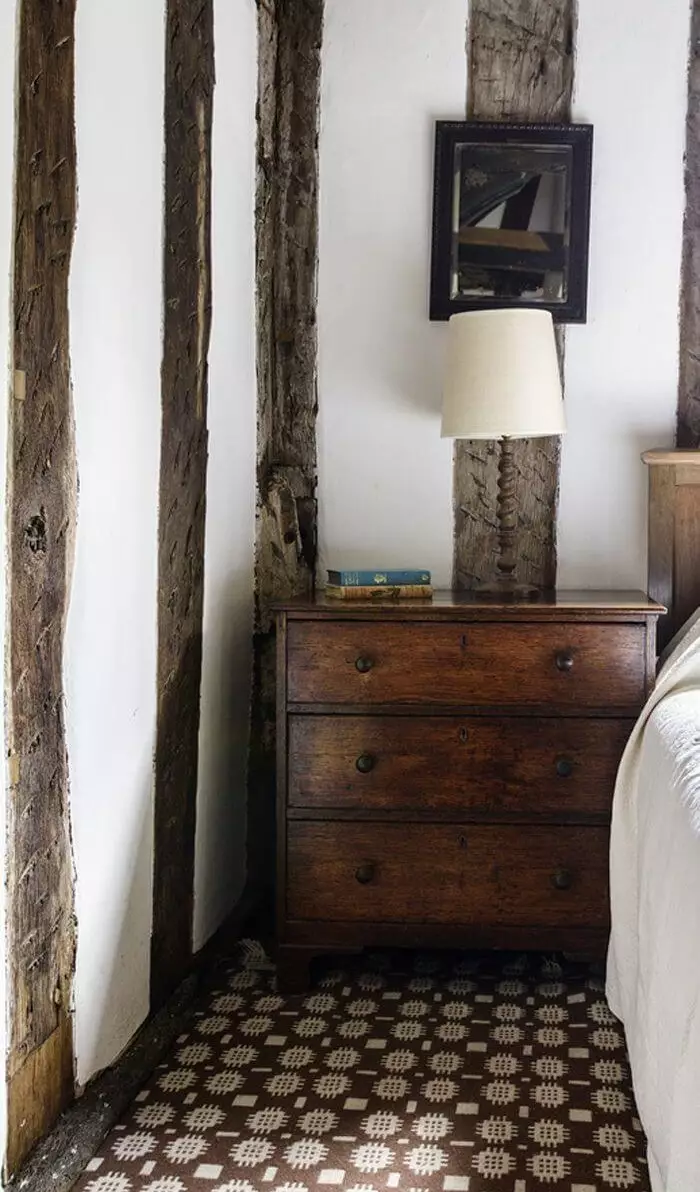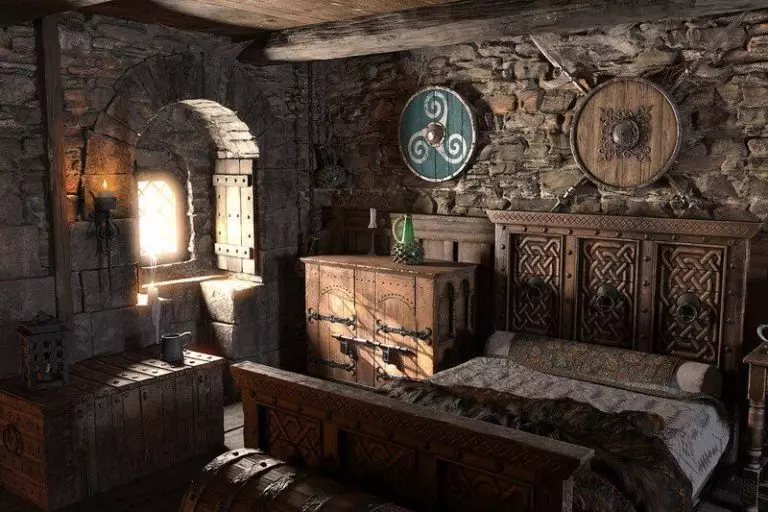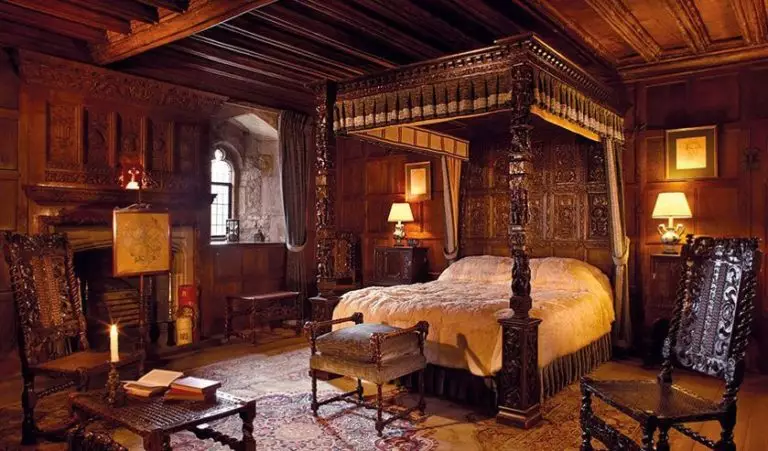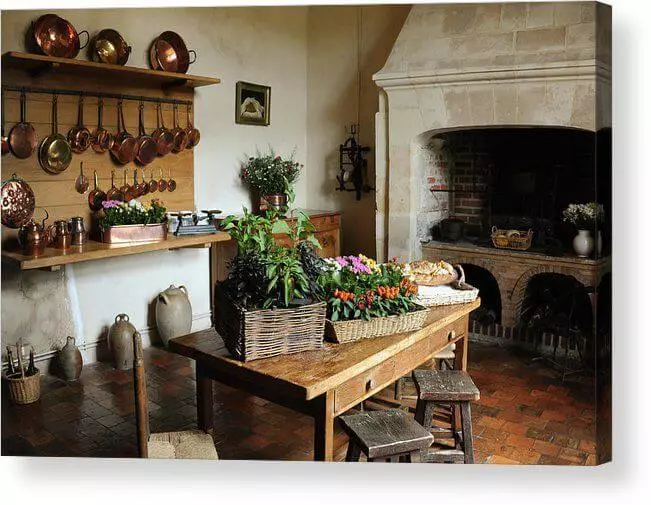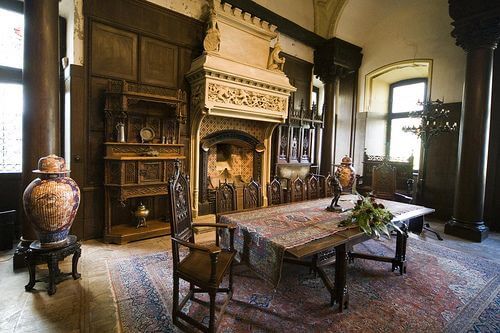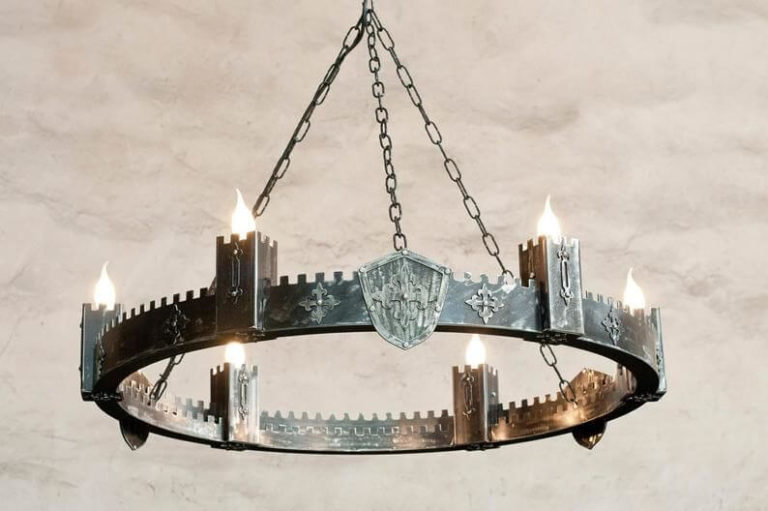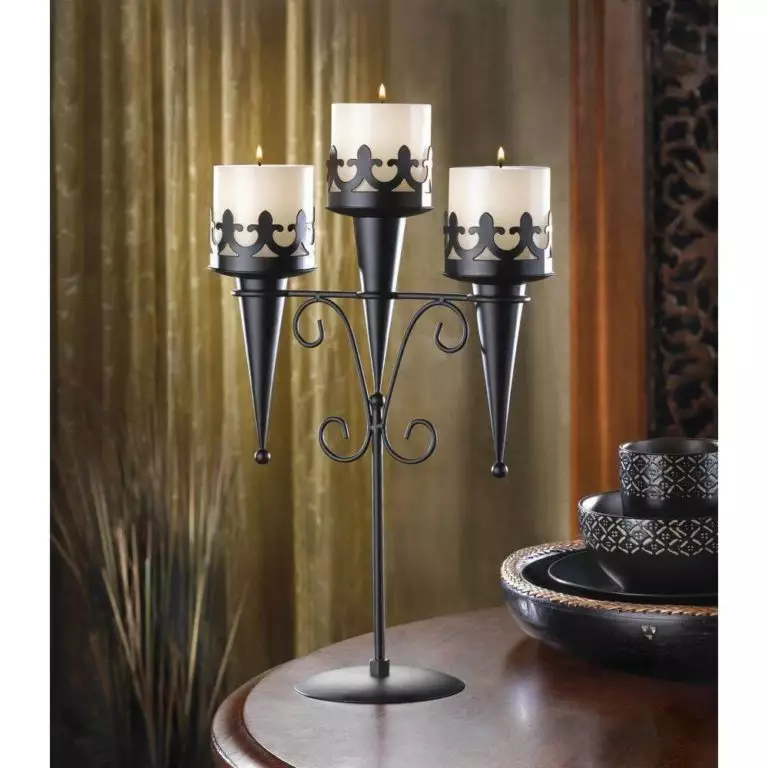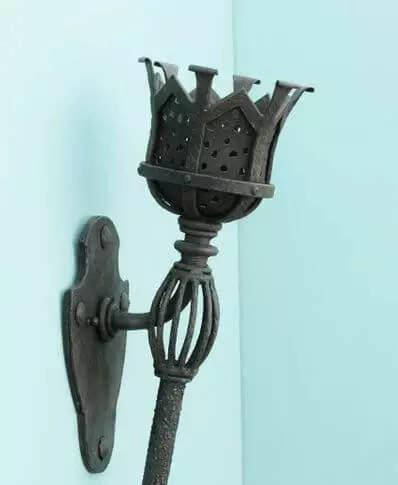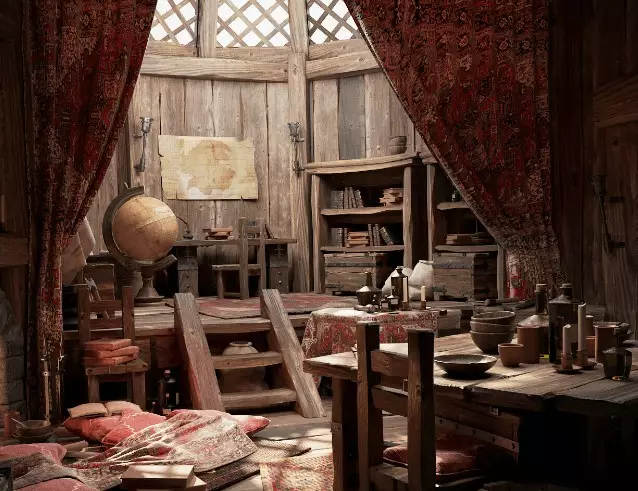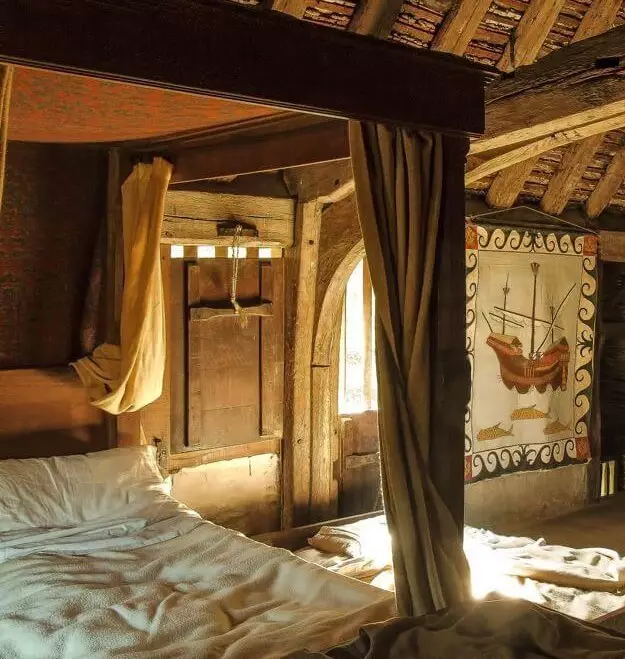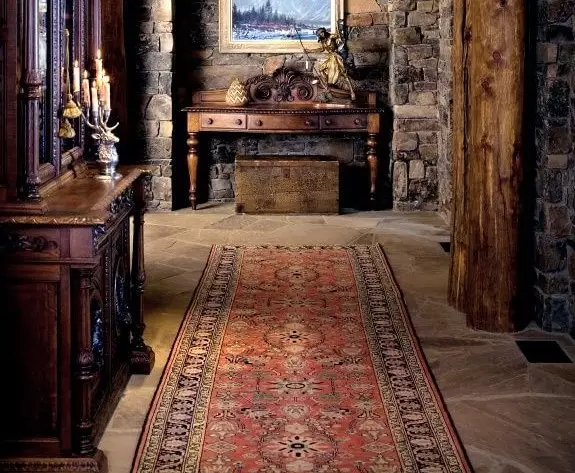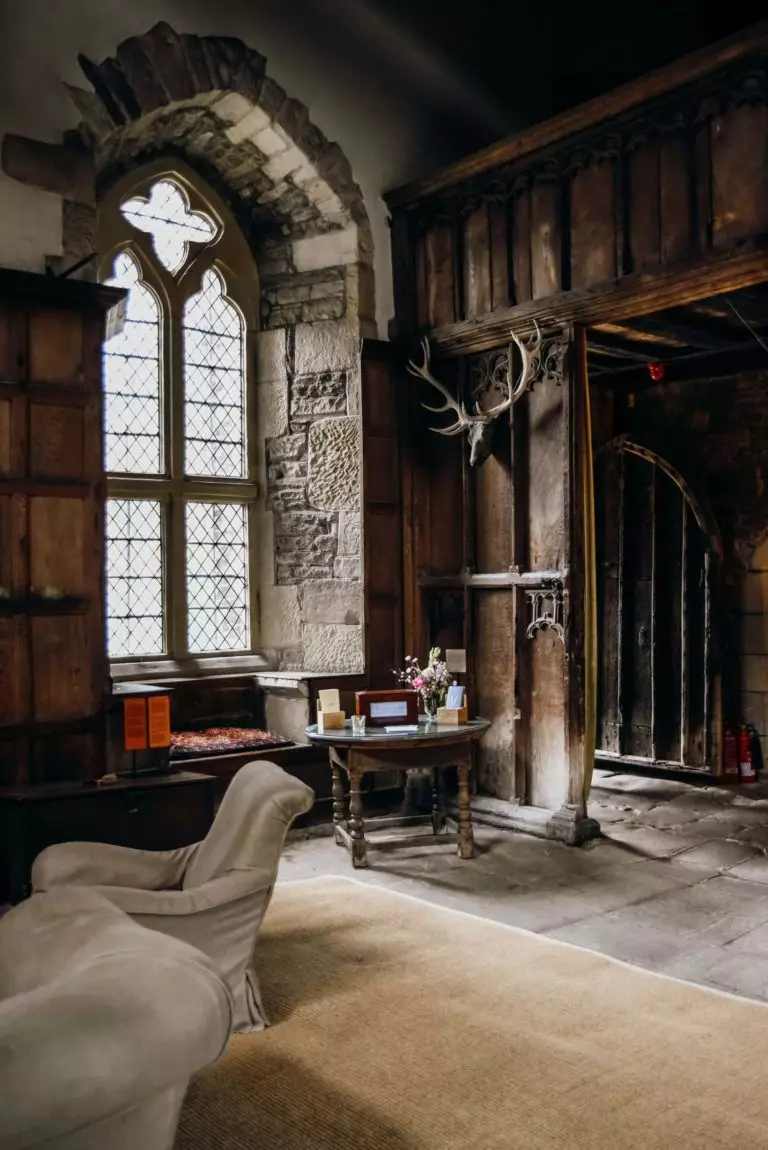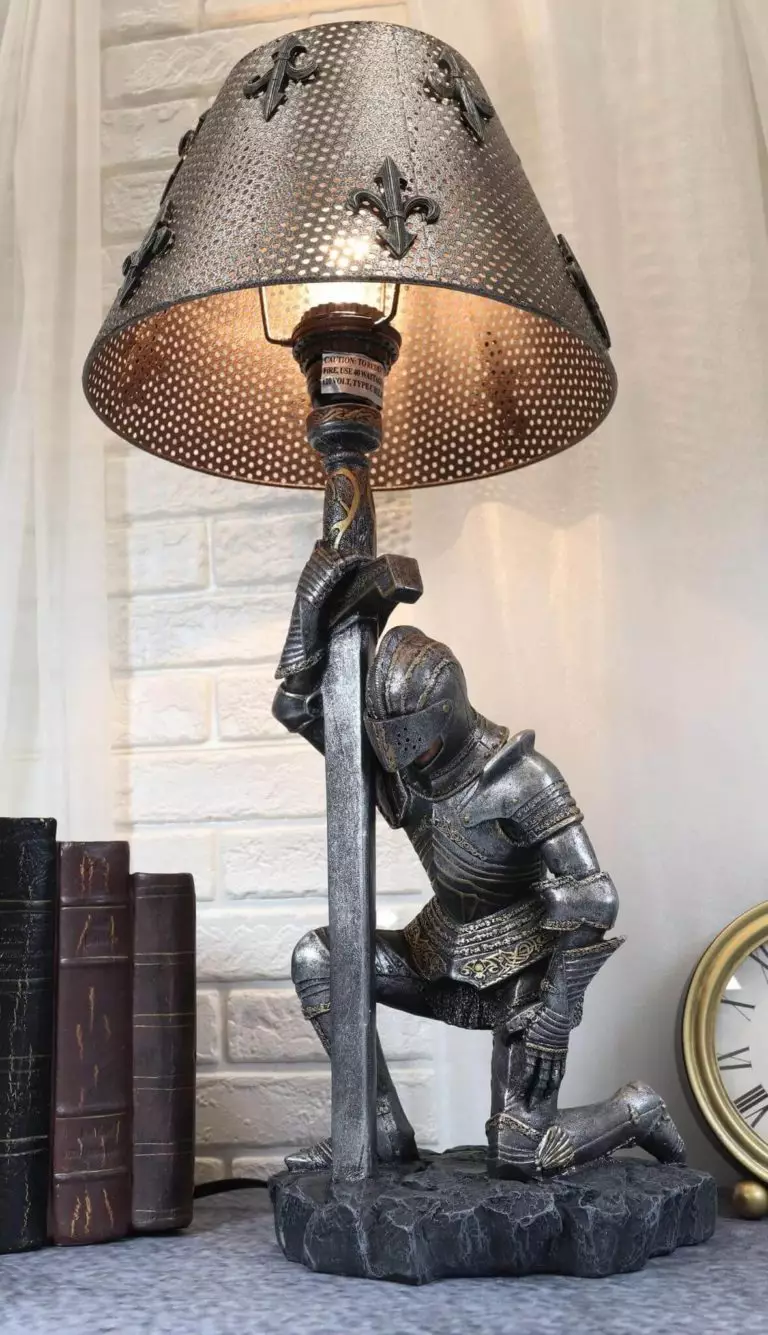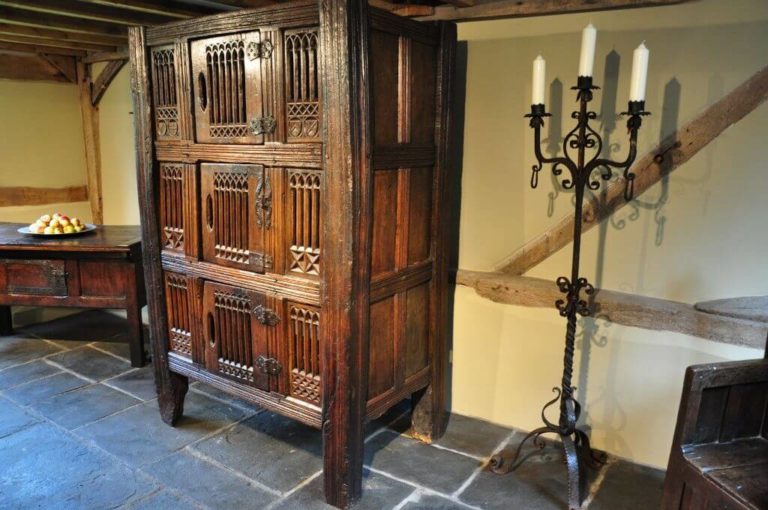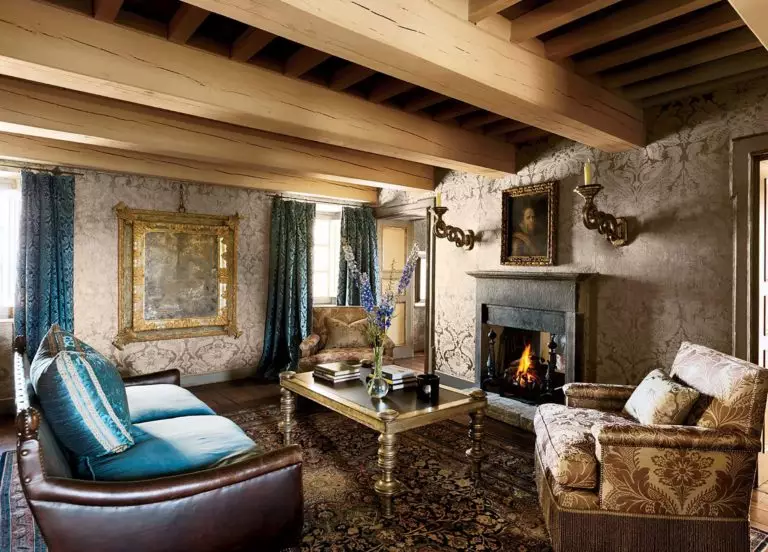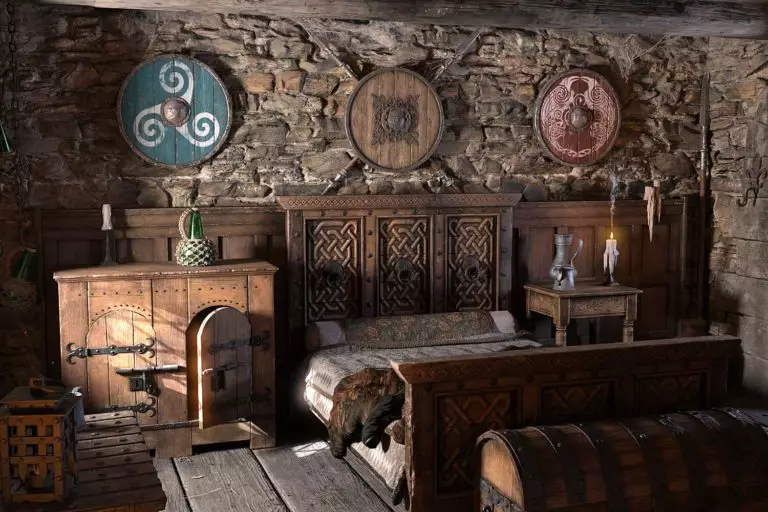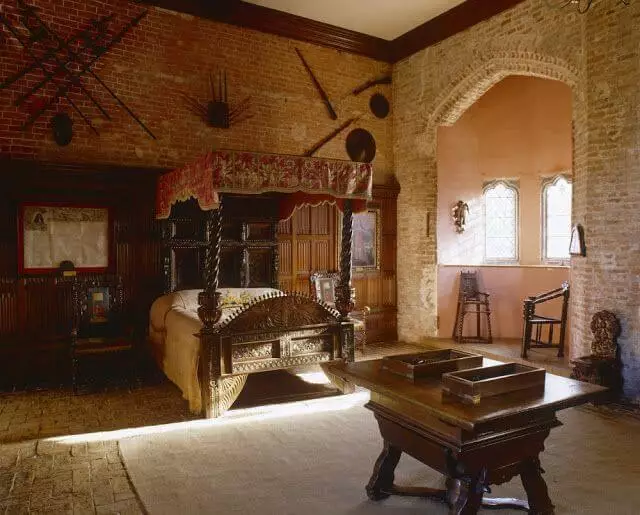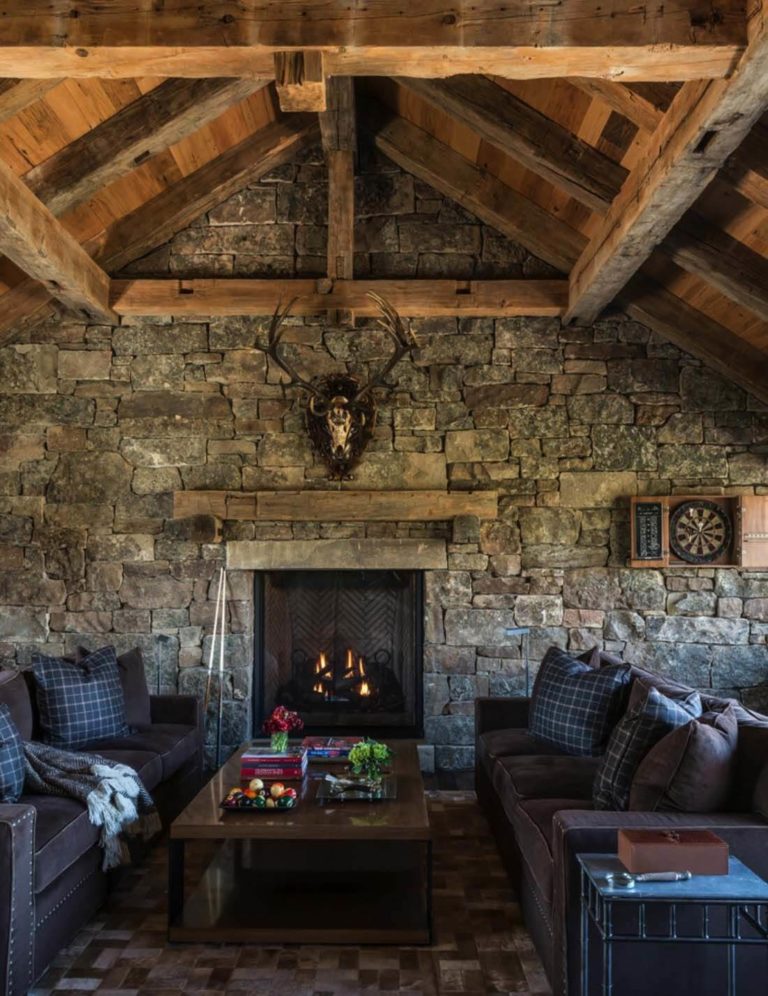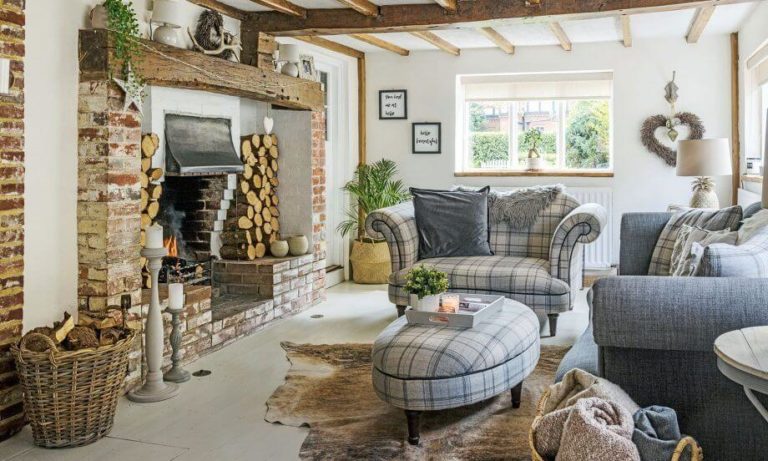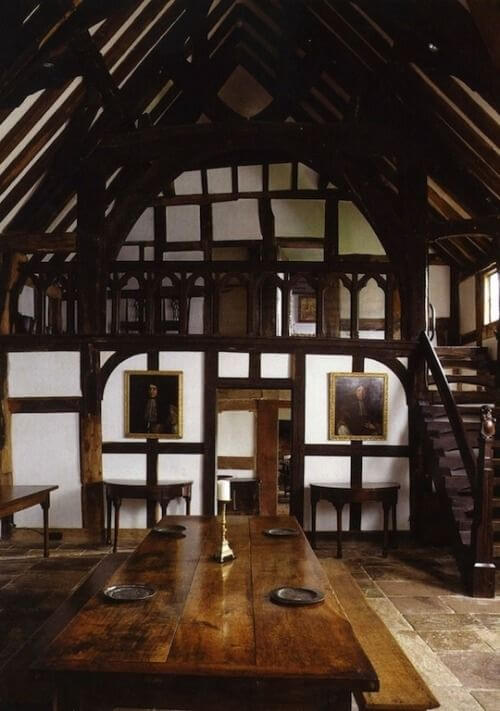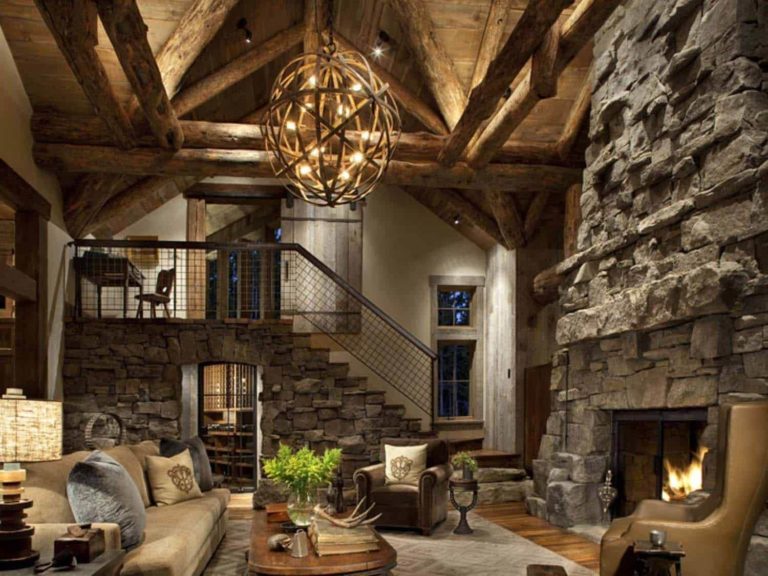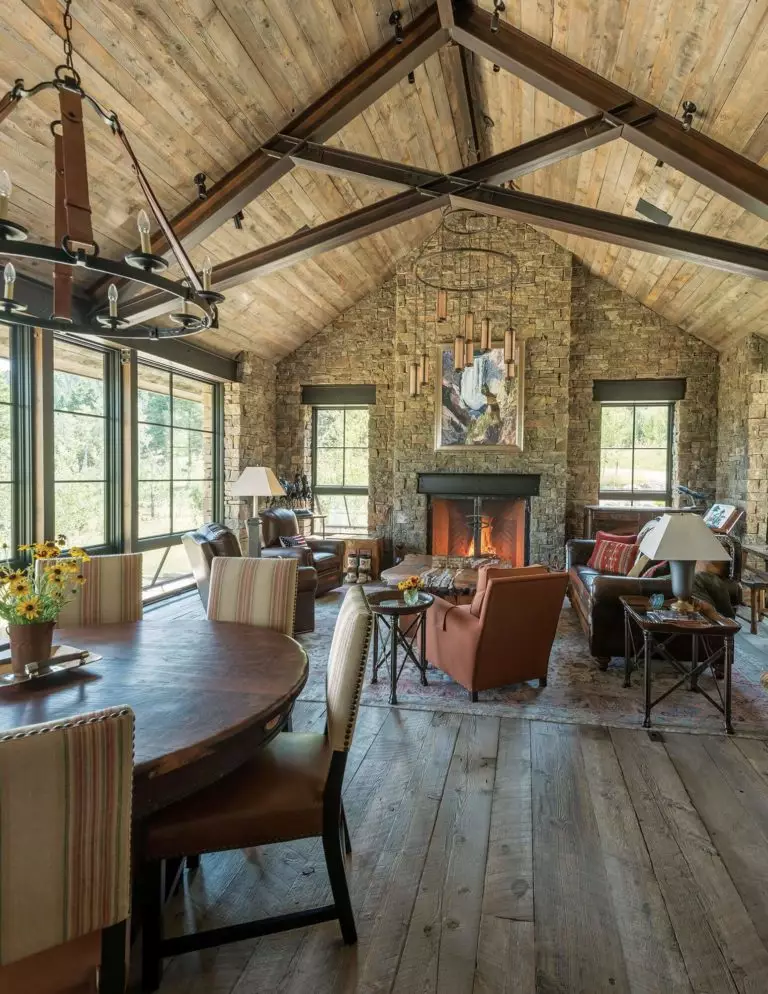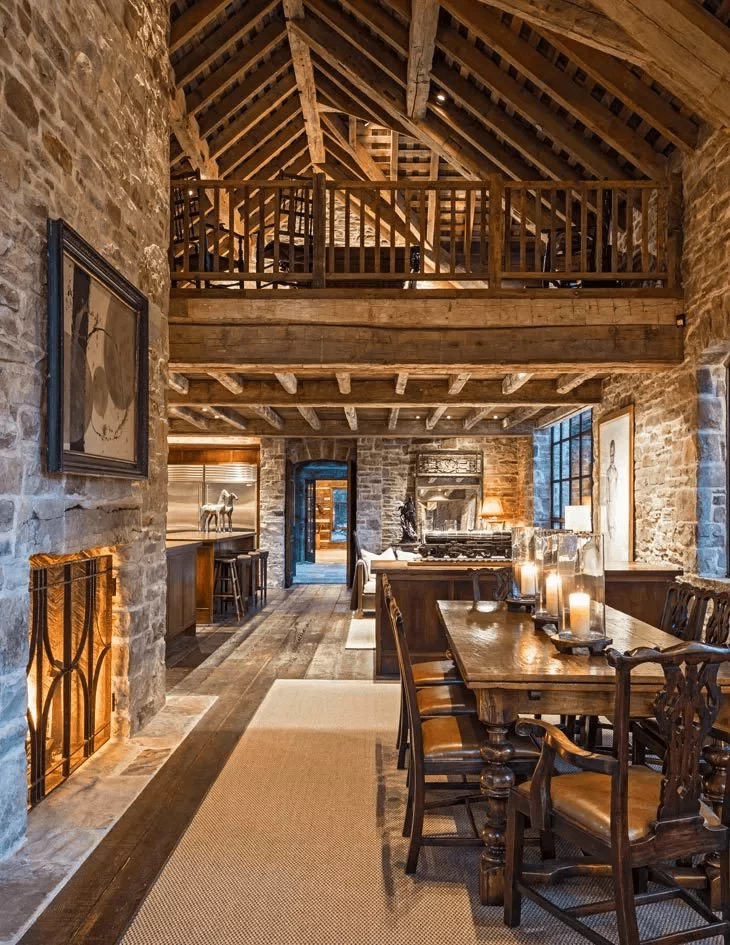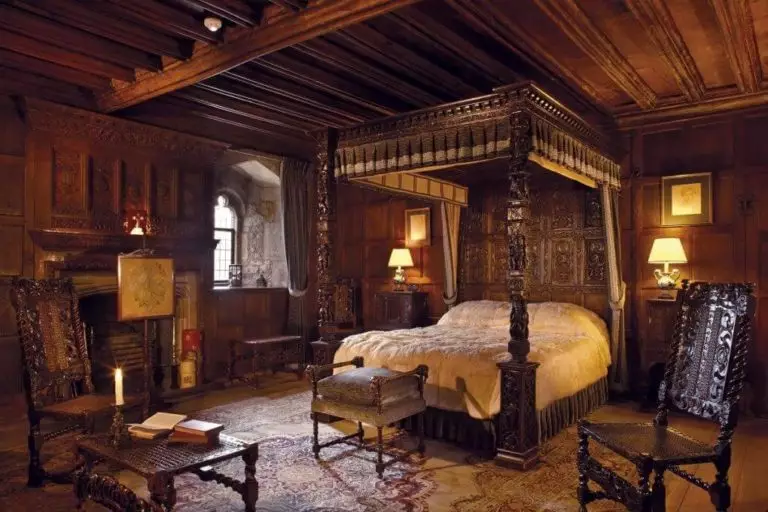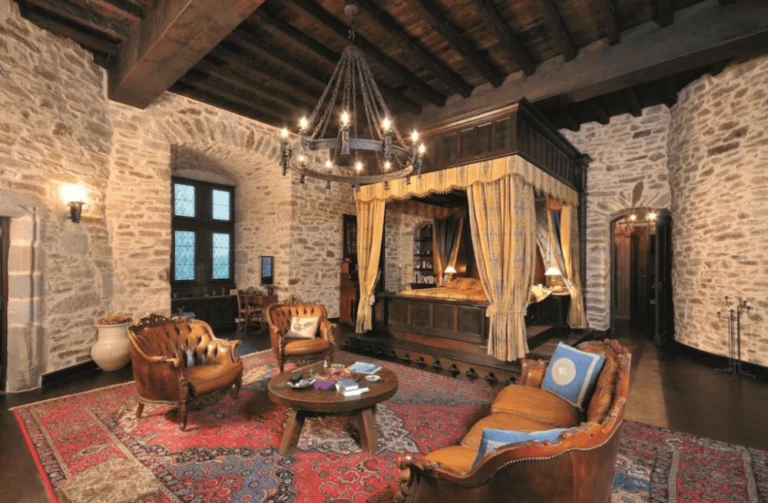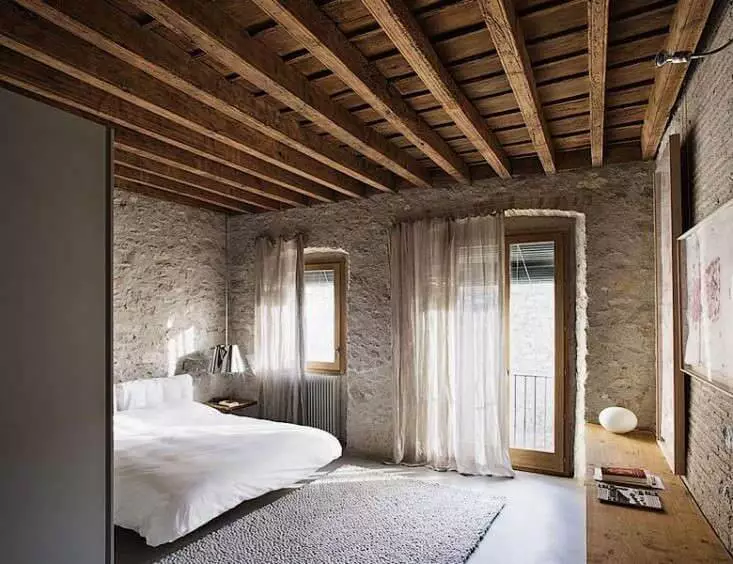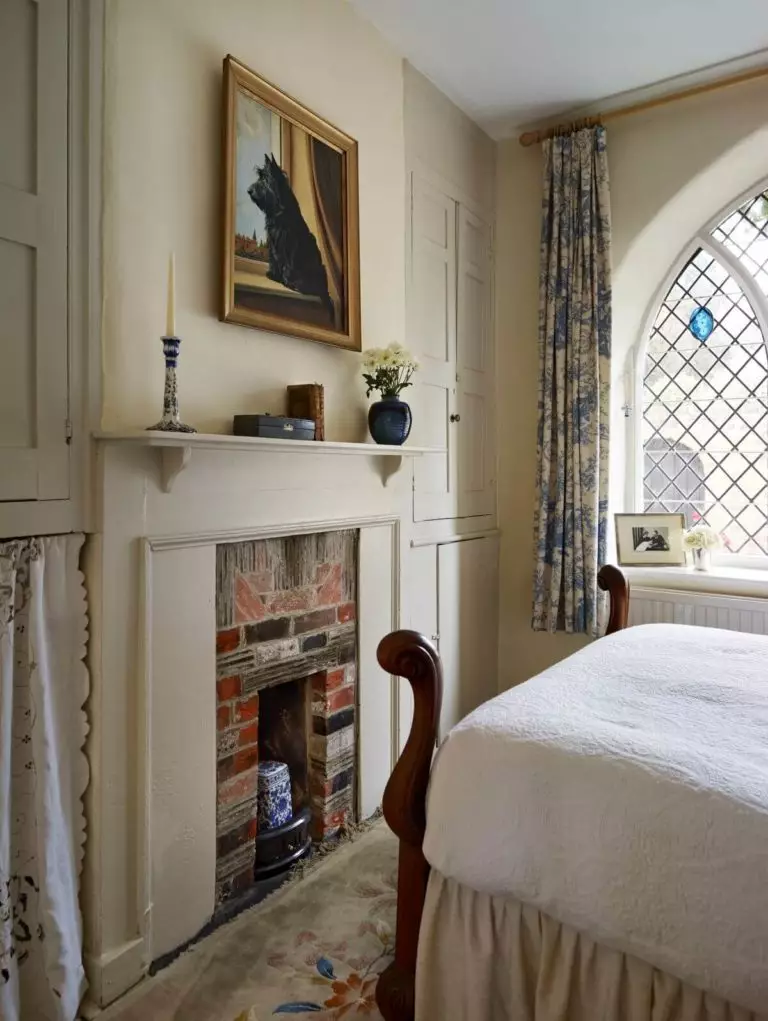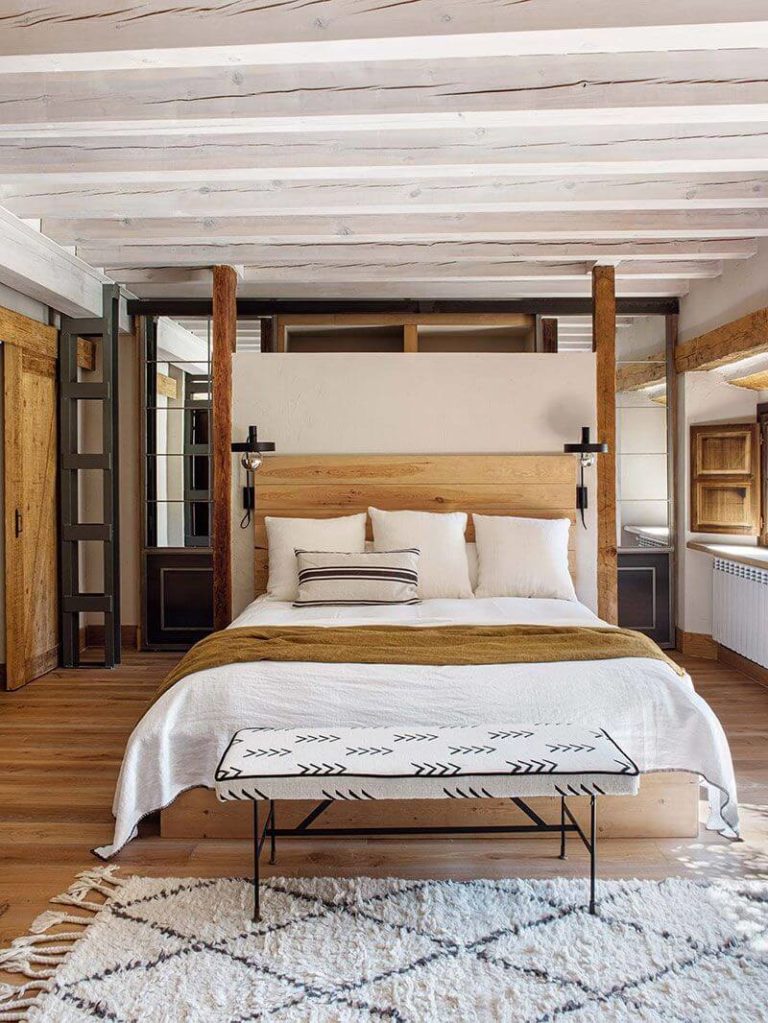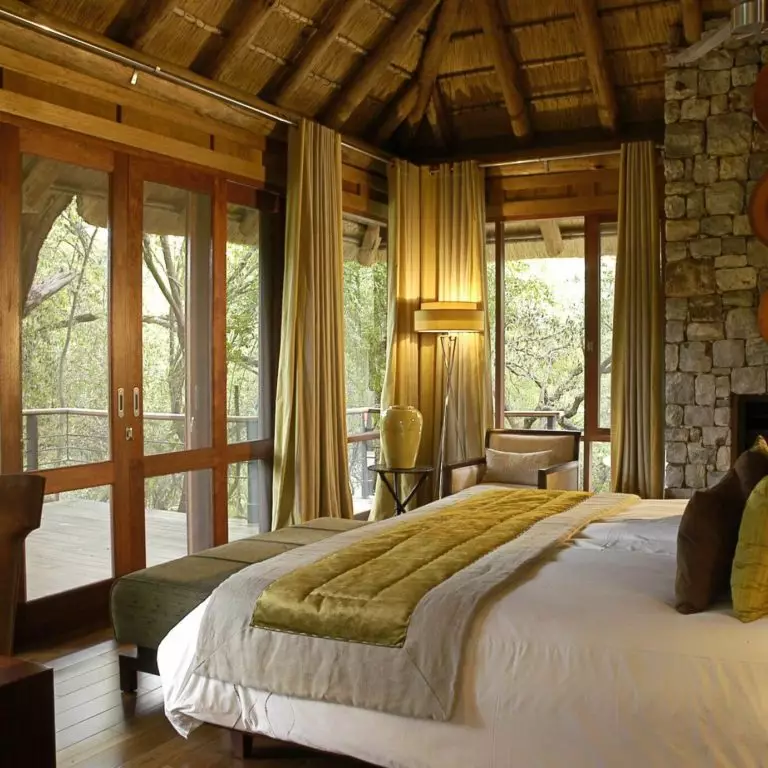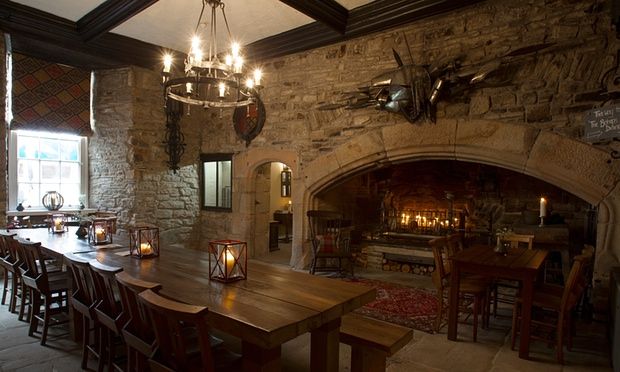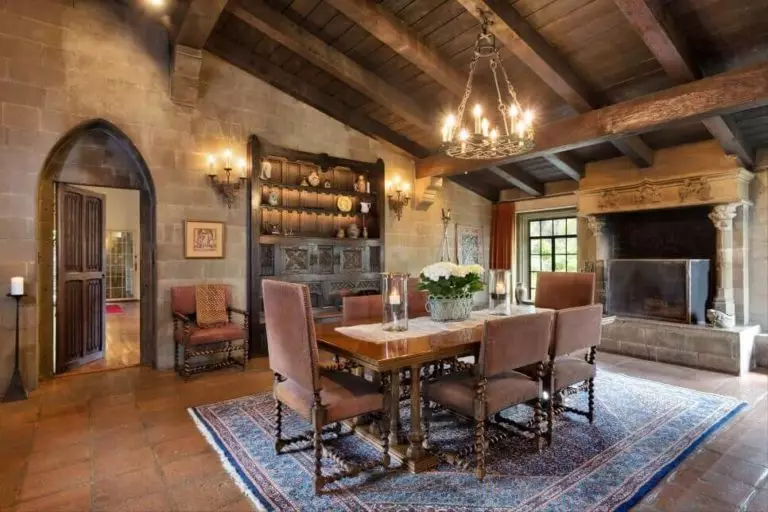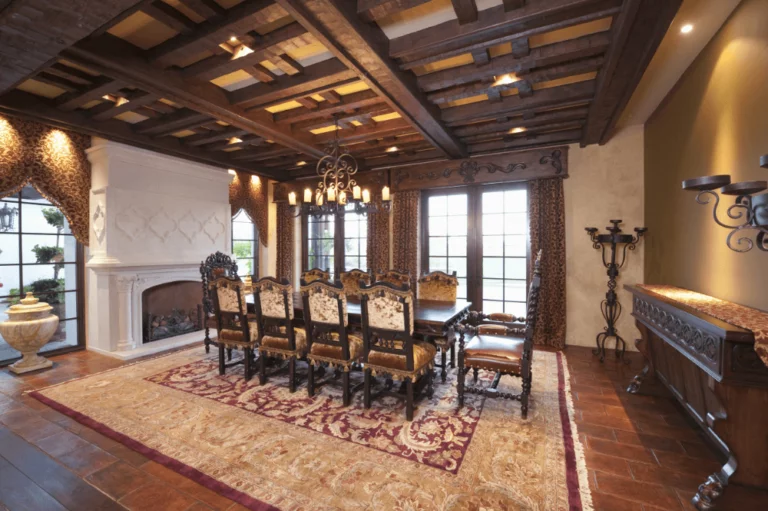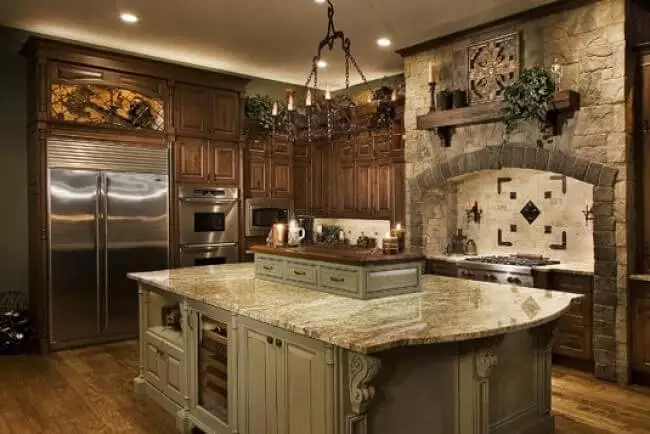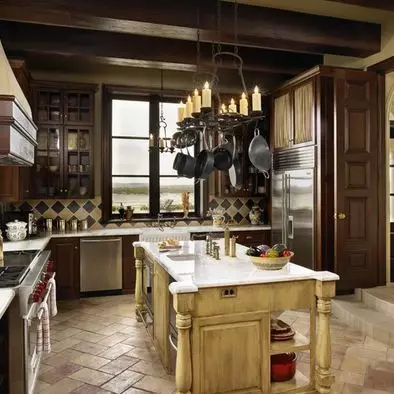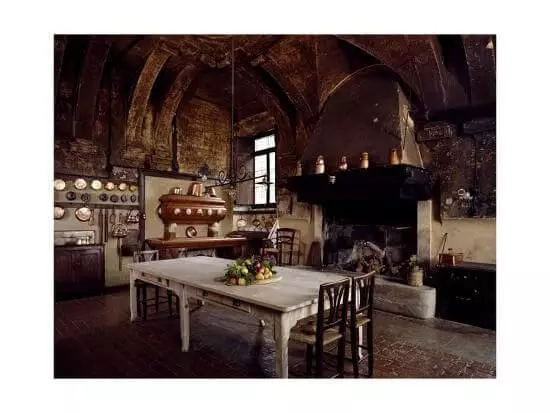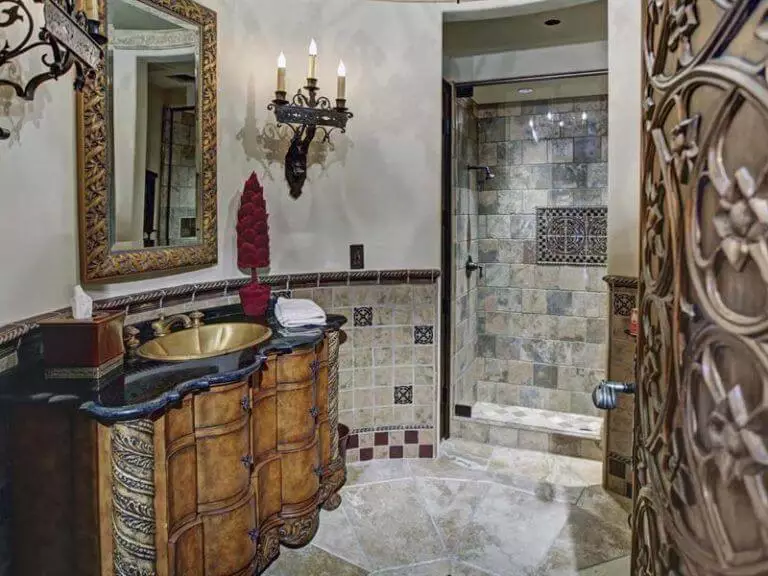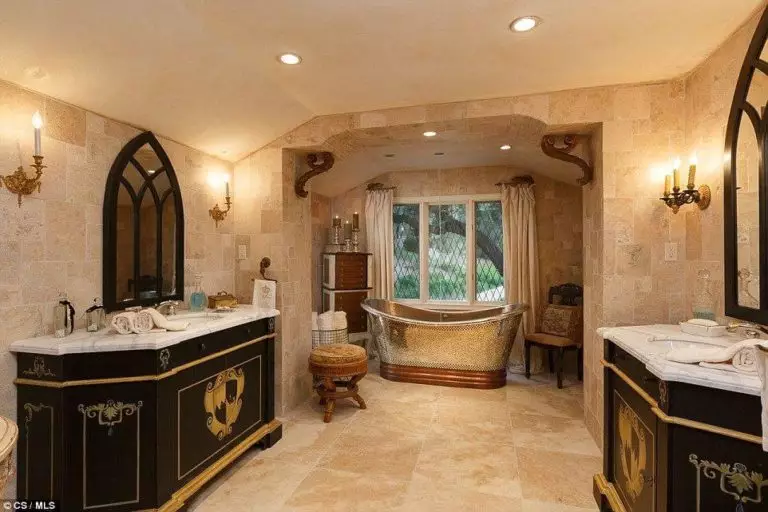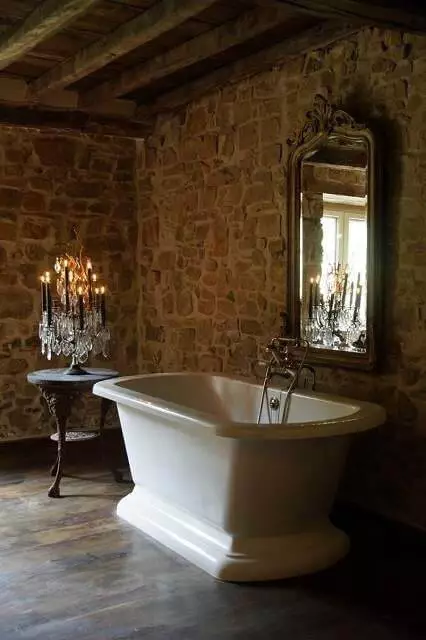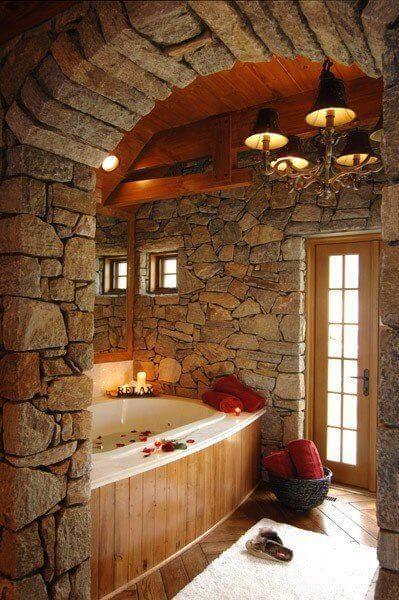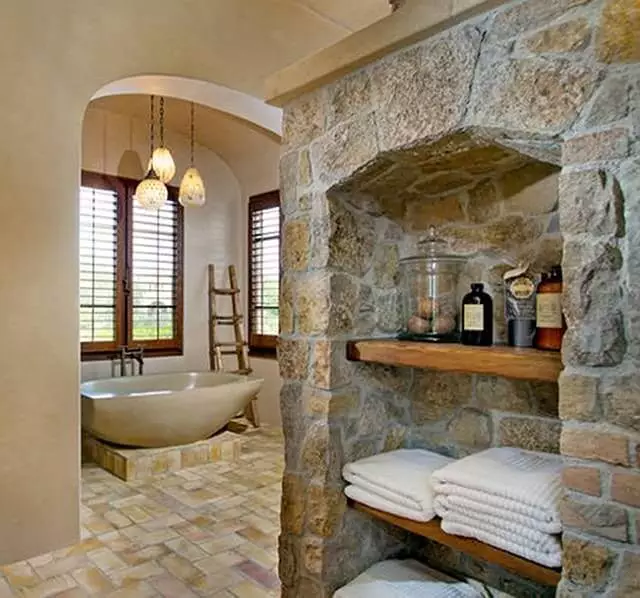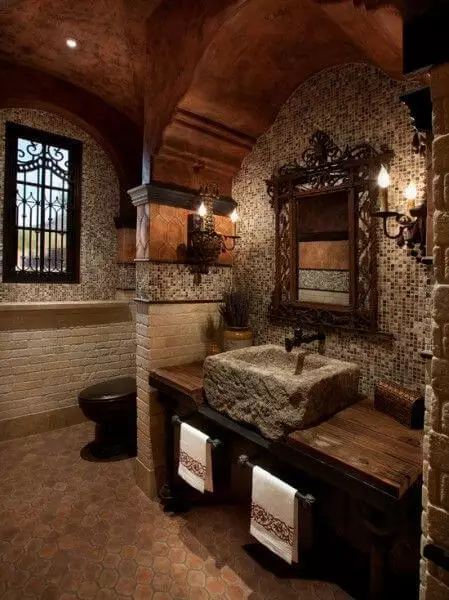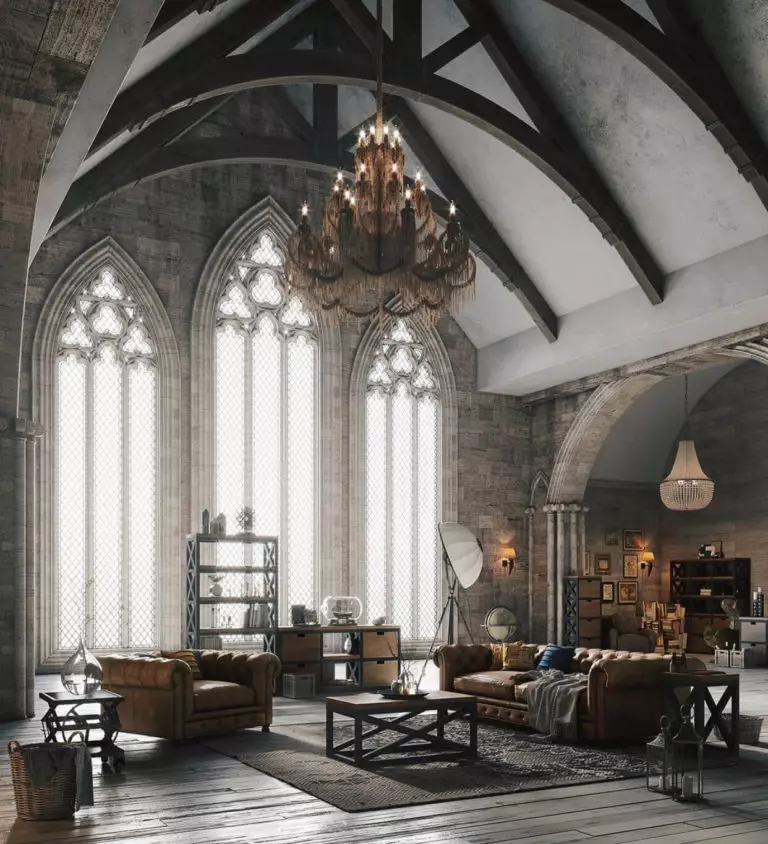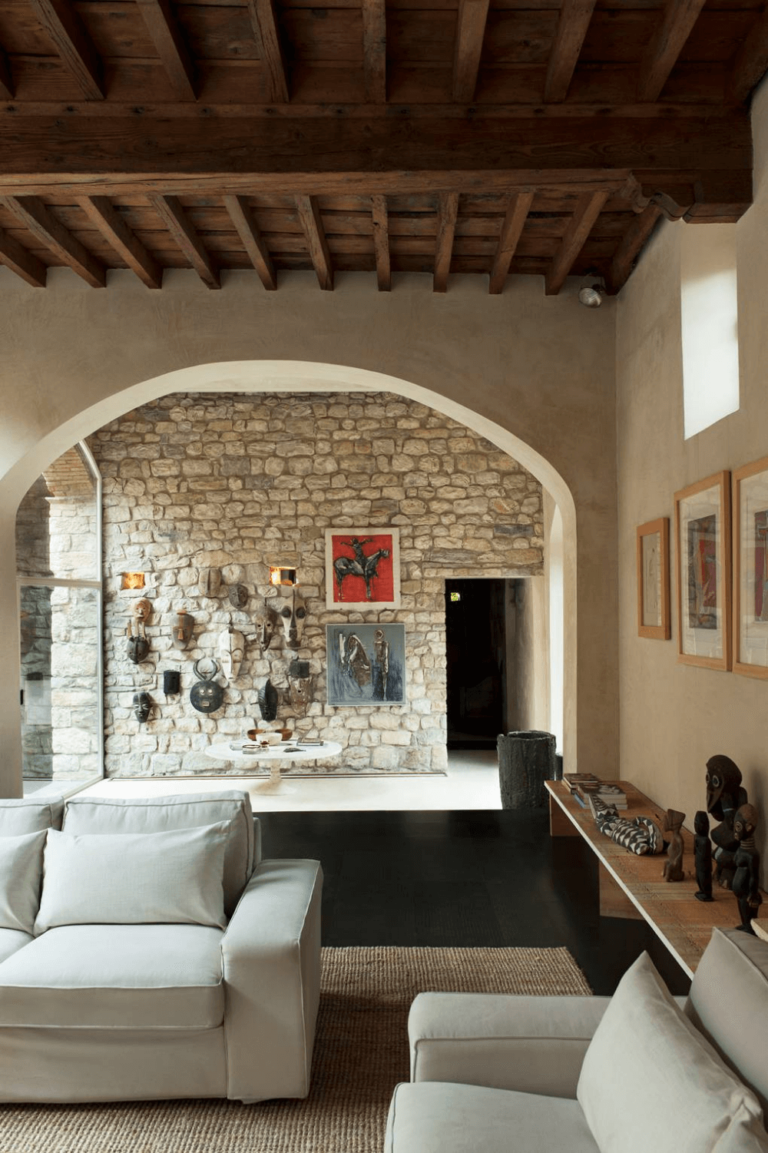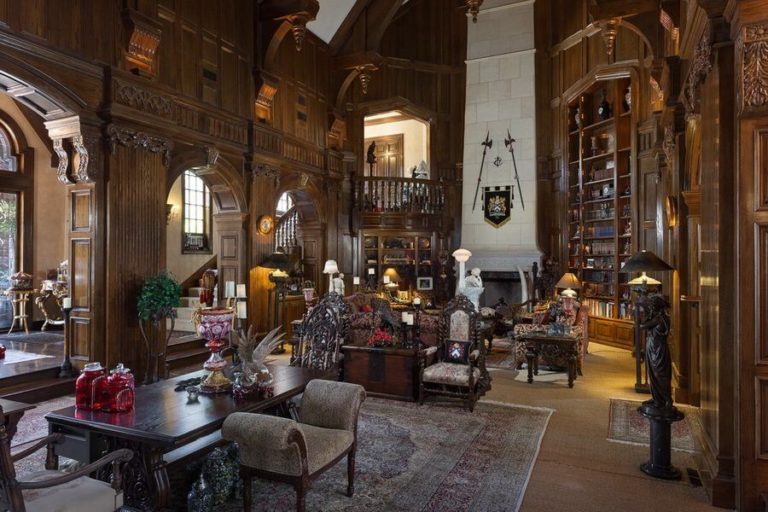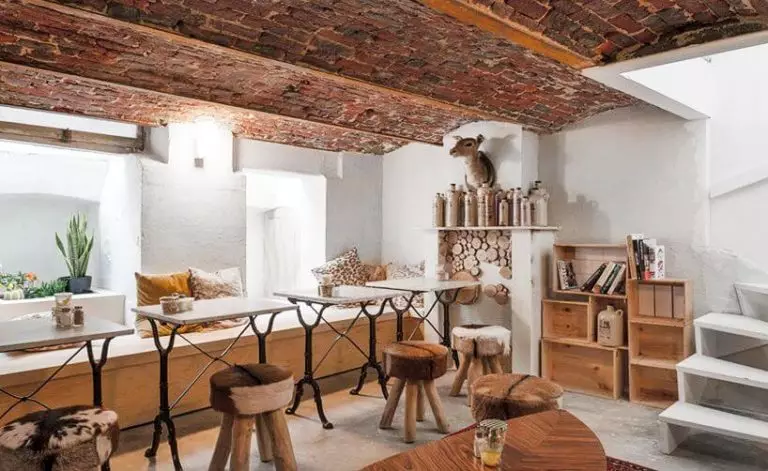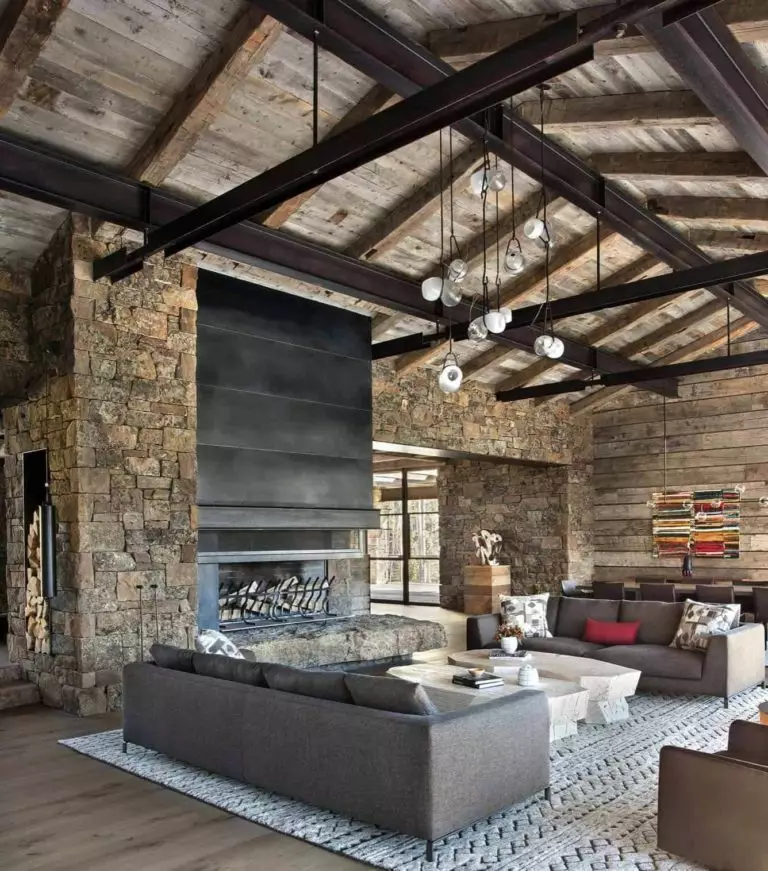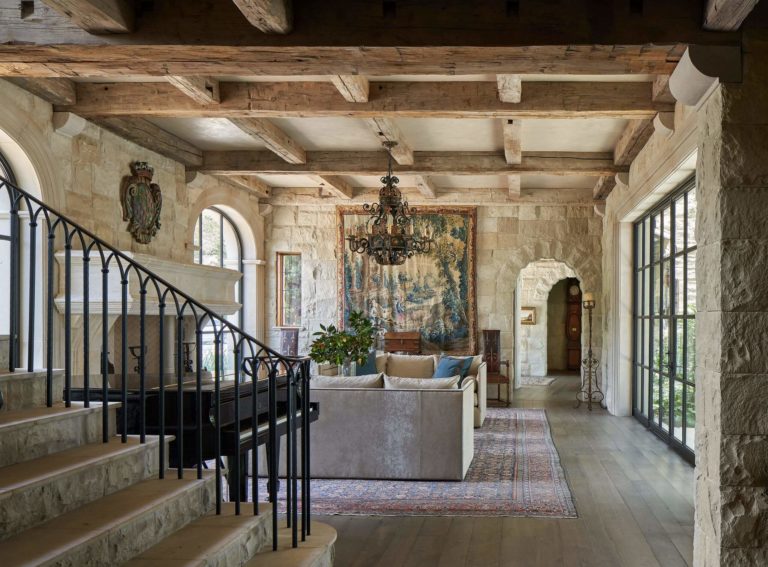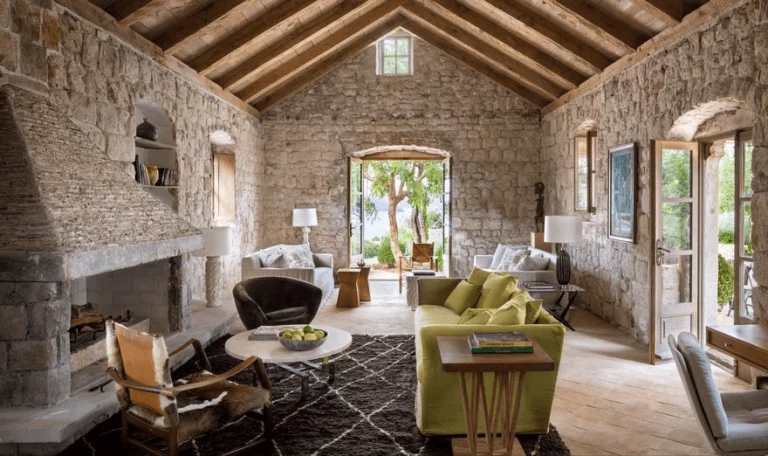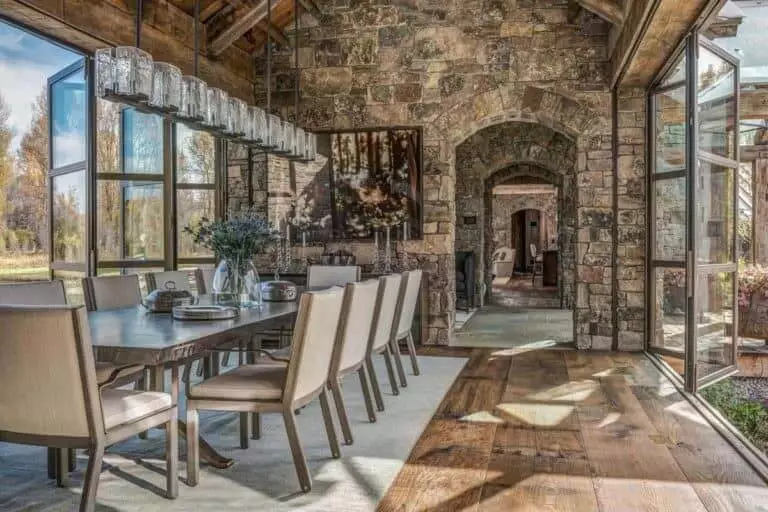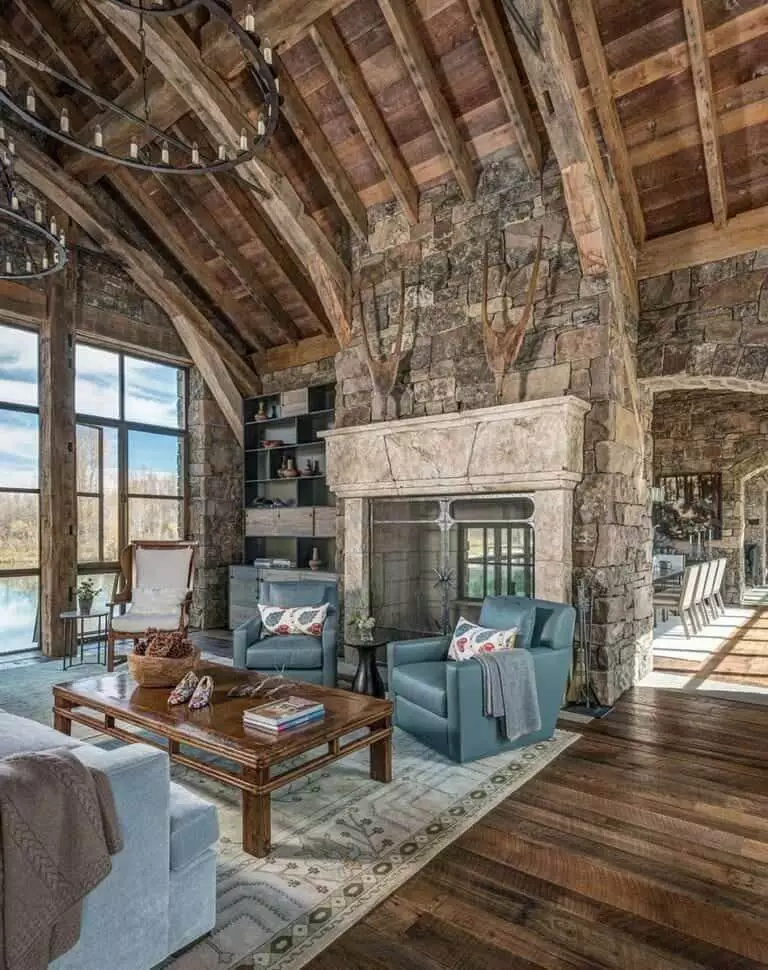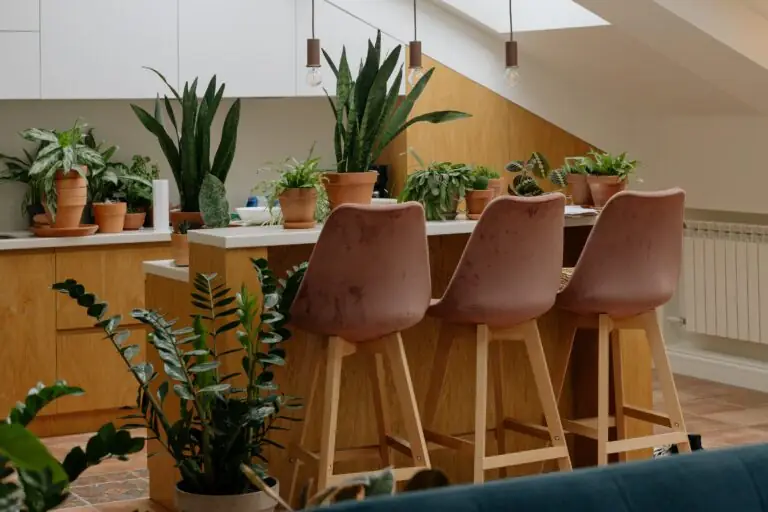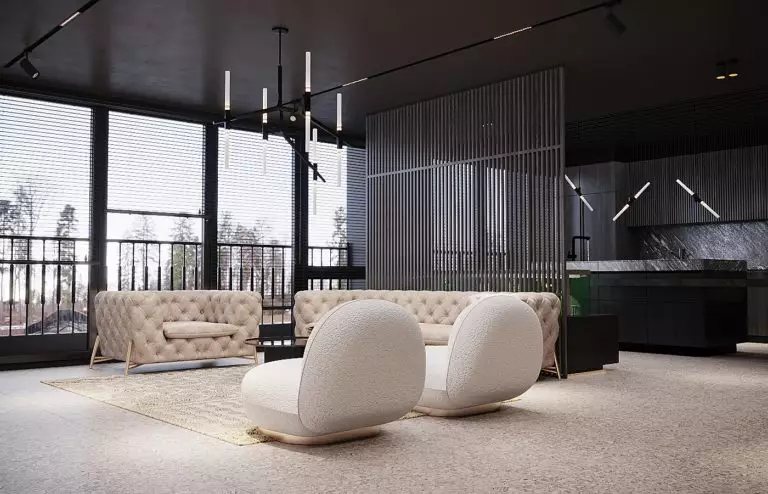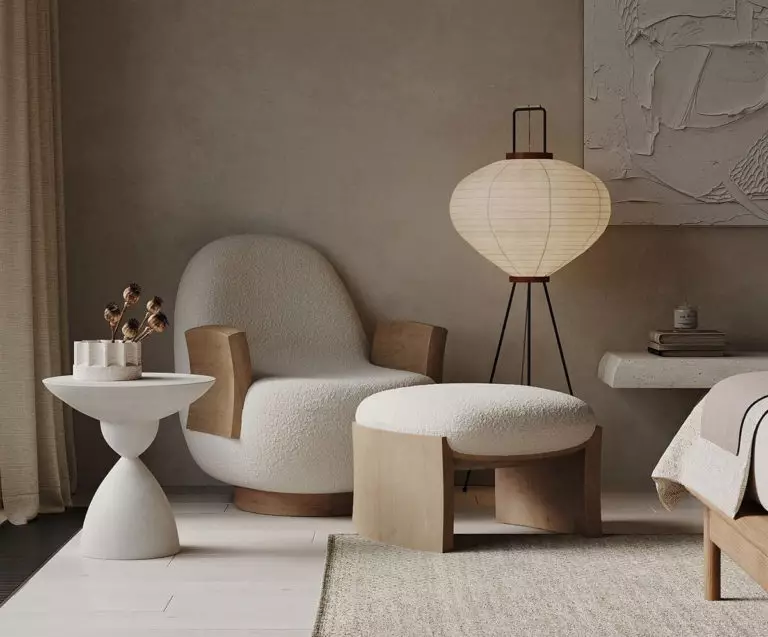Medieval style in interior design
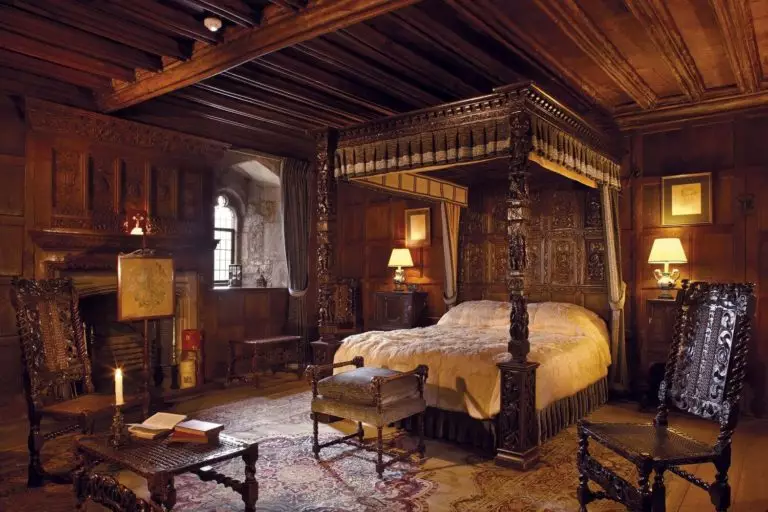
Today there are design directions that are on everyone’s lips and those that remained in the distant past. However, every time we see a house or apartment decorated in an unusual style, we cannot help but admire it to the fullest. So, if you are already tired of Minimalism, the bricks of the Loft do not lead to any emotional uplift, the simplicity of Scandi makes you sleepy, and the Farmhouse-style has lost its charm and does not impress you anymore, it’s time to try something new, and, as it seems to us – completely and undeservedly forgotten – the Medieval style… Ready to dive in? Let’s get it started!
What is the Medieval style?
The Middle Ages is a fairly long period of time, covering the period between the 5th and 15th centuries. Many people often associate this time with something gloomy, cold, and uncomfortable, although this is far from the truth. It was then that the first scientific and geographical discoveries were made, inventions that are in use even now began to be developed, and art, literature, and production were actively developing in various directions. It is no less interesting the fact that the castles that we admire today were built at that time, and their decoration continues to arouse keen interest.
With all its positive aspects, the Middle Ages was a rather turbulent time, which influenced the architecture of residential buildings. First of all, the houses were supposed to protect from real threats and took the form of fortresses. That is why they were characterized by thick and solid stone walls and rather small windows. Therefore, a small amount of light was penetrating the rooms, which led to particular features considered peculiar to the interiors of that time.
Today, experts distinguish two directions in the Medieval interior style – Romanesque and Gothic. Let’s tackle them in more detail!
Romanesque style
The formation of architecture and the rules for the design of dwellings, typical for this style, fell on the 9th-11th centuries, and Germany, France, and, to a slightly lesser extent, England played a key role in it. This was the time of knightly campaigns, conquests, fights, and civil strife, so the inaccessibility and reliability of the house were valued much more than rich decoration, while luxuries were available to an extremely small number of Europeans. That is why Romanesque design is characterized by severity and even asceticism – which, however, does not deprive it of its original beauty.
The features of this style direction were:
Of course, today, it is unlikely that it will be possible to implement the Romanesque style in a small apartment. However, the owners of a large cottage, adhering to the principle “my home – my castle”, may well be interested in such an approach.
Gothic style
By the beginning of the XII century, the monumental and ponderous Romanesque style gave way to the Gothic style, which also originated in France. The new direction impressed with great grace and decorativeness manifested through the following features:
One should note that the Gothic style is more popular today than the Romanesque. And although it also requires more space to be implemented, designers and homeowners are more likely to opt for Gothic.
Fundamental principles and key elements
Medieval style in the interior can be conditionally divided into “simple” and the so-called “castle” style, typical for the dwelling of wealthy nobility and knights who held a certain position. Something tells us that the first option – earthen floors, low and roughly knocked together wooden furniture, a full-wall fireplace, and a hard-on-touch and uncomfortable bed – will hardly impress you. Therefore, we will talk further about the castle style, fascinating with its monumentality and grandeur but not devoid of a certain grace.
It should be noted that the castle-style obeys strict principles, and if you want to achieve an interior that matches the Middle Ages environment as much as possible, you should follow them as well. The list of these very principles is small, so it will be easy for you to remember them.
Colors and prints
The palette of the Mid-century is not distinguished by excessive brightness, reflecting the mentality of that time. For decoration appropriate to this style, we suggest paying attention to the following colors:
There are few prints and patterns in such an interior, but they are all quite sonorous and large-scale. This primarily concerns tapestries and frescoes with biblical subjects or genre scenes, as well as upholstery and textiles with heraldic or floral designs.
Finishing
Creating a basis for furnishing in the Medieval style is difficult and simple at the same time. Difficult – because you need a lot of materials, and you will most likely have to order them. Well, simply – because the choice of these very materials is actually not that wide. Let’s look at this from a narrow perspective!
Walls
Forget about wallpapers! They did not yet exist in the Middle Ages – as, indeed, paints and decorative plaster. The key elements for wall decoration are stone (possibly artificial) or whitewash. You can also order murals on the walls to give your interior much-coveted exclusivity. Wall panels made of dark wood, such as oak, are also appropriate.
Ceiling
In castles, ceilings became a real decoration for halls and bedrooms – and not because of the rich decor, but exclusively due to the complex structure with arches and vaults, semicircular or pointed. Also, they were often decorated with wooden beams, repeating the pattern of ceilings. In modern designs, carved wooden caissons with round lamps were preferred.
Flooring
Here the choices are also limited – stone or wood. In the modern Mid-century, you could also replace natural materials with large format porcelain stoneware with matching color and texture. However, no gloss – only natural matte surfaces. A good and quick option can be concrete flooring with minimal processing, on which carpets with an oriental pattern look very beautiful.
Furniture
Furniture in medieval castles was bulky and massive and surprised with a rather rough finish, which was hand-made. More sophisticated furnishings appeared a little later. Today, the following elements are suitable for furnishing:
Of course, modern realities make their own adjustments. Today, the furniture characteristic of the Middle Ages is combined with contemporary elements – sofas, armchairs, cozy banquets, or ottomans – of course, made in accordance with the general style of the house.
Lighting
As mentioned earlier, there was really a lack of light in medieval houses and castles. And this was not dictated by the love for darkness but by the need for a reliable shelter from enemies: large windows made the owners of the castles vulnerable. That is why a mysterious twilight reigned in the premises scattered by candles and torches and later by huge chandeliers under the ceiling.
When choosing a lighting scenario for a castle-style interior, do not try to achieve maximum brightness: the mysterious and muted atmosphere has to stay in the place. Design should be your priority when choosing luminaires: the wrong lamp can spoil the whole impression. Decorators suggest opting for large wrought-iron chandeliers, table lamps in the form of candelabra, and volumetric metal sconces in the appropriate style. Floor lamps are rarely used here, but if you cannot do without them, choose the ones that match the chandelier perfectly.
Textiles
In the Middle Ages, good fabrics were very expensive. Merchants brought them mainly from the East, and therefore the possession of such wealth was a matter of special pride for wealthy people. Therefore, they were gladly displayed.
That is why the castle style is characterized by dense, heavy, expensive fabrics with a rich texture – velvet, silk, brocade, satin, and tapestry. At the same time, they could even be monochromatic since they looked spectacular on their own. Today, designers suggest using modern materials such as corduroy and chenille.
Additionally, do not forget about carpets, which were also considered a kind of treasure and were brought from abroad. Models with a low, thick pile and a rich pattern in an oriental style look best in such an environment.
Decor
Accessories have a special role in medieval interiors – to create an authentic atmosphere and mood. You will not see any flirty figurines and graceful glass vases here: everything is quite large and expressive. The most popular decor items are the following ones:
Medieval style in various rooms
Today, the castle-style is not appropriate for all rooms. So, it is categorically not recommended to use it in the nursery, and it is not very convenient within the office. However, you can easily adapt it to your preferences in other rooms, finding a compromise between modern comfort and authentic Mid-century.
Living room
A thousand years ago, the “living room” concept did not exist in the castles. The main room was a huge hall where they received guests, talked about business, dined, and had breakfast. The authentic design combined dining and living areas. However, if you want more intimacy, then this technique is optional.
Today, a massive fireplace remains the key element of the living room, near which there can be a table with chairs (like in a real castle) or armchairs and a sofa – massive, voluminous, with a plain textured upholstery. A wooden bookcase and desk, skins and stuffed animals, and a collection of weapons on the wall can complement the decor. If you cannot imagine your evening without a TV, integrate it into the interior as delicately as possible – for example, into a niche trimmed with stone.
Bedroom
The first thing to consider when furnishing a medieval-style bedroom is to choose an appropriate bed. Wealthy people preferred to rest properly, and therefore the sleeping place was striking both in size and design. Massive carved columns, lush canopies, luxurious carved headboards, podiums – this is how it should look like today. The presence of a large and warm blanket and many pillows is also a must-have.
If you want to recreate an authentic medieval interior, you don’t even need to buy any furniture for the bedroom. However, it is worth paying attention to a wrought iron chandelier and a carpet on the floor for greater harmony and comfort. It will be no less impressive if you complement the furnishings with a small soft armchair, a coffee table, a long banquet with an openwork metal base, or a huge chest.
Dining room and kitchen
As we said above, the dining room and the living room in the castle interiors were integrated into a single space. Just imagine- a wide and very long table, along which are placed wooden benches or high-backed chairs, mysteriously flickering candles and a chandelier on the ceiling, and the cheerful conversation of guests at lunch or dinner. Today, you can furnish your dining area the same way, although on a smaller scale.
If you are designing the kitchen, you just need to follow the basics of style – more stone and wood, a hood over the stove in the form of a stone hearth, and luxurious metal fittings. All household appliances are hidden as much as possible – ideally, you should choose built-in appliances that will hide behind wooden cabinet doors.
Bathroom
Private bathrooms were not yet available in the Middle Ages. Water procedures were usually done in the bedroom, where you could immediately crawl into bed under a warm blanket. However, today it is difficult to combine the bedroom with a bathroom, which is perhaps unnecessary. It is enough to arrange the second in the spirit of the mid-century. The following elements will help you with this:
Modern Medieval style
Both the Romanesque and the Gothic styles are so original. They appeared and were forgotten so long ago that it is not even worth talking about their one hundred percent authenticity in modern conditions. Indeed, today hardly anyone will use large, hand-hewn stone slabs – it is much more reasonable to choose large-format porcelain stoneware and artificial stone. The heavy bog oak floor has been replaced by parquet flooring. The rooms have become much brighter and more comfortable thanks to electric light, and kitchen appliances and electronics have to be carefully masked, but they cannot be completely hidden.
If you are interested in the harsh charm of the Middle Ages, be prepared for the fact that it is not possible to recreate its characteristic atmosphere down to the smallest detail: the scale, materials, technology and way of life today are significantly different from what it was almost a thousand years ago. And this shouldn’t upset you at all! Carefully thought out furnishings, finishes, and decorative elements will lead to an amazing interior from the past, but at the same time adapted to the most modern requirements for comfort.
Medieval style: is it trendy now?
What we will say now will not be a sensation: of course, the Medieval style is extremely far from the popular ones. Today, most of us live in apartments and small houses, where it is impossible to set an environment peculiar to castles. That is why you can only see it in individual projects of houses, the owners of which can easily afford such a scale.
Why should you try this style?
The answer to this question is obvious: to plunge into the romance of the past! Indeed, if you have all the possibilities for arranging a house in the spirit of a medieval castle, then opting for the Gothic (or Romanesque) style will be a great way to take a break from the usual brevity, elegance, and functionality. Every time you return home after a difficult day at work or from long business trips and vacations, you will immerse into a completely different world – sounds tempting, doesn’t it?
Who is the Medieval style suitable for?
You may consider everything that the castle design offers for the exclusive decoration of your home in the following cases:
Medieval style in different countries
Differences in medieval interiors in European countries are not that significant but still noticeable. We bring several “geographic variations” of Gothic and Romanesque designs to your attention – perhaps one of them will delight you more than others.
England
Although Britain can be considered a trendsetter of style to a lesser extent than France and Germany, it was here that it found a particular charm, sung both in books and in numerous films. A characteristic feature of the English version is the abundance of dark wood and carvings on furniture, as well as the predominance of dark red fabrics and details with gilding.
France
The French “Middle Ages” in the interior impresses with a large number of light colors, graceful details and even some kind of femininity – if, of course, this is, in principle, possible to say about such a style. Beige, soft cream and honey tones, intriguing bas-reliefs and frescoes on the walls, and even furniture with beautifully carved backs are often seen here – as a harbinger of the Renaissance.
Germany
In the interpretations of the medieval style characteristic of German castles and wealthy houses, two extremes can be noted – maximum asceticism or impressive splendor. In the first case, you can see whitewashed or stone walls, a minimum of furniture, a couple of wooden objects, and dim, like homespun textiles. In the second, there is a spectacular contrasting design of arches and arched vaults, an abundance of ornaments on the walls and richly colored tapestries, colorful tiles on the stove and upholstered chairs. It is up to you which one to choose.
Italy
The Italian version of the medieval style is closer to the Romanesque – which, however, is not surprising since it originated on the territory of this country many centuries ago. It is easy to recognize it by its semicircular arched vaults, massive ceiling beams, a rather monotonous yet light palette, and minimalism in decor.
Medieval style is the choice of true connoisseurs who do not strive to be like everyone else and do not tolerate the transition of current trends into something usual. Of course, such a desire for originality requires effort, but living in a house, as if descended from the pages of a novel about knights, is an amazing opportunity worth giving a try.
